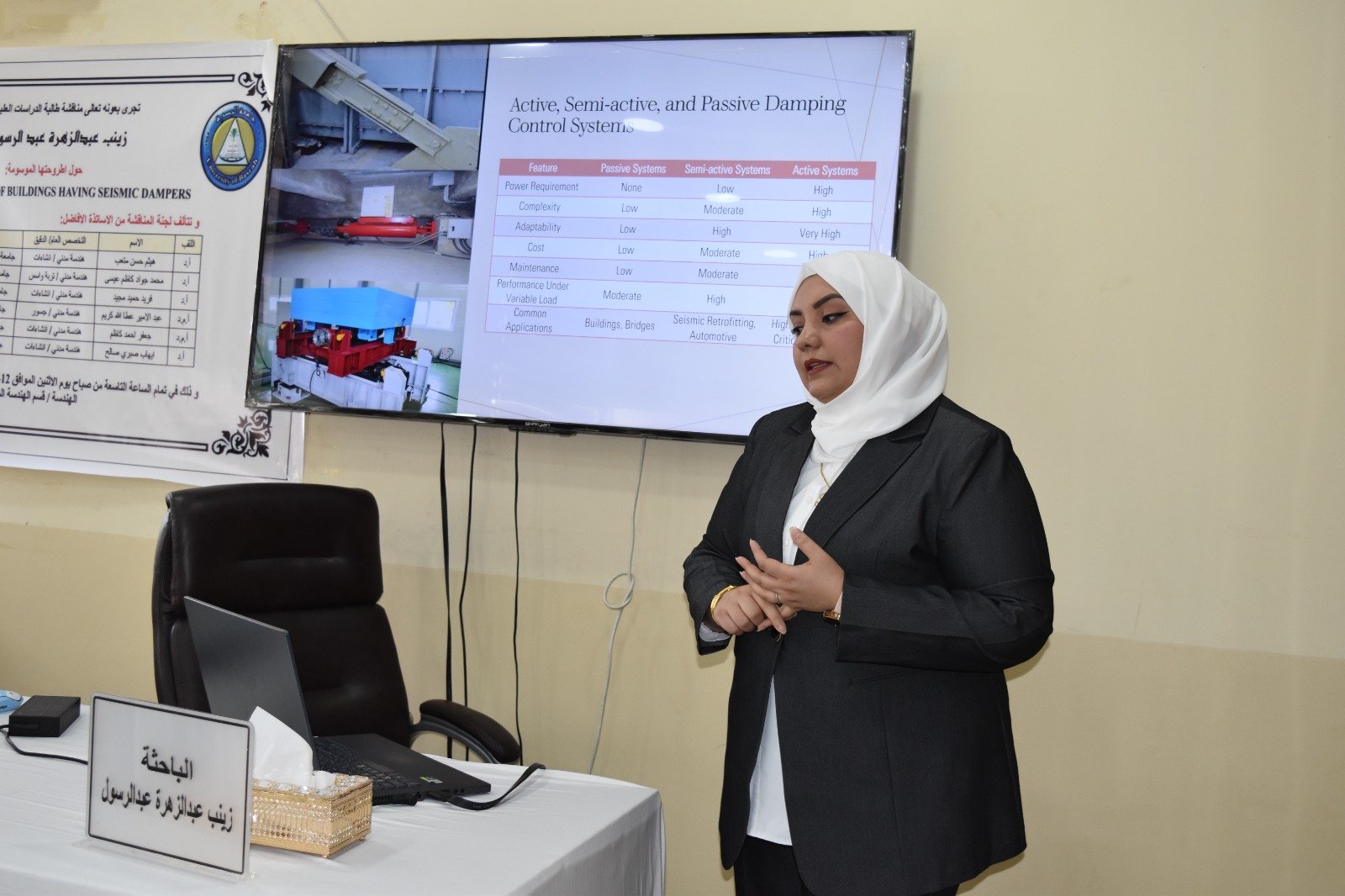The doctoral thesis of the student Zainab Abdul Zahra Abdul Rasool was discussed in the College of Engineering, University of Basra, Department of Civil Engineering, entitled The dynamic response of the iron structure containing seismic dampers, and it includes Earthquakes can be catastrophic phenomena that cause casualties, injuries, and significant damage to buildings. The magnitude of damage to individuals and assets caused by earthquakes is mostly determined by the performances of buildings to withstand seismic forces. Insufficient design, analysis, and construction procedures are significant factors contributing to the poor performance of buildings during earthquakes. It is important to note that even buildings built according to building codes can still experience severe damage from earthquakes. However, the absence of effective management and sufficient dissipation of seismic energy is a primary factor contributing to structural damage during seismic excitation. The effectiveness of conventional fundamental components in structures with energy dampening has been severely limited and may not be capable for dissipating significant amounts of seismic energy. Due to the rapid developments in technology along with associated engineering methods, several novel products, methods of manufacture, and calculation approaches are being developed to reduce the destructive impact of earthquakes on buildings. This study investigates the damper effectiveness of reducing seismic hazards for buildings. The response of steel buildings to seismic activities is studied. The building with 10 stories is considered with and without dampers subjected to Ali Algarbi, Bam, El Centro, the Iraqi-Iranian border, Kobe, İzmit, and Northridge earthquakes. ETABS V21 program is used to model and analyze the studied cases. Three various types of damper systems are studied. The damping systems used in this study are viscoelastic, friction and viscous. The placement optimization of each damper has been studied in three groups. The first group placed the damper at one story (F1, F2, F3, F4, F5, F6, F7, F8, F8, F9). while the second group implies placing the damper at two stories (F12, F34, F56, F78). The last group included placing the damper at three stories (F123, F456, F789). Also, three damper configurations have been studied, including diagonal, chevron, and upper toggle. The optimization of the three configurations has been studied. The result showed that the damper systems were efficient in reducing the maximum displacement. For the ten-story building subjected to seven earthquakes, the maximum displacement reduction occurred when the damper was placed on the third story when using the diagonal viscoelastic damper. While, the maximum acceleration reduction of the diagonal viscoelastic occurred when the damper was located at the mid-story. The upper toggle viscoelastic damper has shown the best performance among the three viscoelastic configurations. chevron viscoelastic damper located in one, two, and three stories, the maximum displacement and acceleration reduction occurred when the damper was placed in mid-stories. The maximum acceleration reduction occurred when the damper was placed in mid-stories for the diagonal friction damper. The diagonal viscous damper exhibits the most exceptional performance of all damper placements. With the chevron viscous damper, the maximum displacement reduction increases as the damper placement moves upward.










